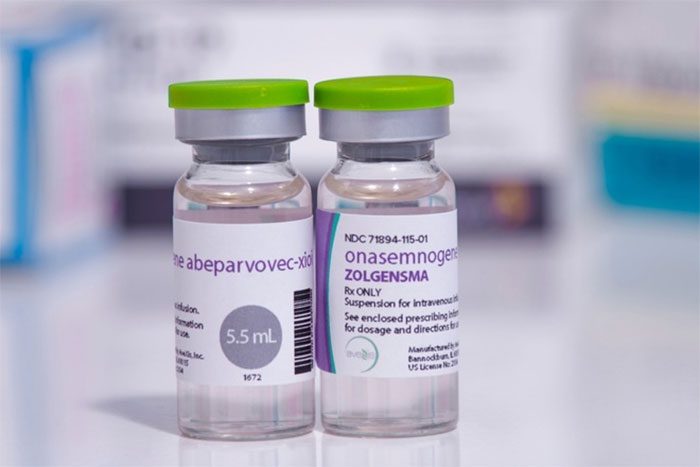With a cost of $2.1 million for each treatment dose, Zolgensma – developed by AveXis, a subsidiary of Novartis – is currently the most expensive drug in the United States.
Zolgensma treats spinal muscular atrophy (SMA), a rare disease associated with loss of motor function, muscle weakness, and paralysis, and is the leading genetic cause of infant mortality.
Although the U.S. Food and Drug Administration (FDA) approved Zolgensma in 2019, some health insurance companies still do not cover this drug due to its high cost. Meanwhile, others impose strict requirements, limiting the number of patients eligible for this insurance, according to Forbes.
To understand why a single dose of this drug costs $2.1 million, one must begin by examining the production process and the reasons behind its creation.
Requires Extremely High Precision
Zolgensma is classified as a precision medicine or personalized drug, as it targets specific issues caused by a person’s unique genetic code.
More specifically, Zolgensma is a gene therapy. With a single dose, Zolgensma will replace the function of the defective or non-working gene in the bodies of affected children to treat the disease.
Zolgensma is designed to address the genetic cause of spinal muscular atrophy, which is the absence or malfunction of the SMN1 gene. The drug replaces the SMN1 gene with a new functioning copy.
However, it is not easy to deliver a working copy of the gene into a cell. The new gene must be placed inside a vector called adeno-associated virus 9 (AAV9). The vector’s original viral DNA is removed and replaced with the functional gene, ensuring it does not cause disease.
After the vector enters the body through intravenous (IV) administration, it can move to the cells and deliver the new gene.
While gene therapy is an effective treatment option and holds promise for curing many conditions, the drug manufacturing process is very costly and complex.
Novartis claims that the high price of the drug is due to it being a one-time dose. Compared to the current therapy, Spinraza, which requires treatment over 10 years, the cost of Zolgensma is only half.
Companies are racing to develop and market new drugs, but they do not take the time to optimize the manufacturing process. As a result, drugs are brought to market quickly but are very expensive to produce, leading to high costs for patients.
Worldwide, over 60,000 children are diagnosed with congenital spinal muscular atrophy each year. Zolgensma has been approved in over 38 countries, and approximately 1,000 children are using this drug.
In reality, Zolgensma does not completely cure the disease, but it helps prevent the condition from worsening. With a single dose, children can breathe independently without the need for assisted ventilation. They can also sit up, crawl, and even walk on their own.
Seeking Better Solutions
From the moment it was first licensed worldwide, Zolgensma has sparked controversy in the medical community due to its high price, production process, and safety. Many families have also expressed their inability to afford it due to the exorbitant costs.

With a cost of $2.1 million for each treatment dose, Zolgensma is currently the most expensive drug in the United States. (Photo: NPR).
According to the New York Times, there have been many drugs for rare diseases on the market priced quite high, up to hundreds of thousands of dollars. However, very few drugs exceed the million-dollar mark.
For example, the gene therapy Luxturna for congenital blindness costs $850,000, and Kymriah, a treatment for leukemia, costs $475,000.
“The cost of a single dose is much higher than that of drugs used daily, weekly, or monthly. However, throughout the course of treatment, the value it brings can be worth millions. Moreover, Zolgensma is only used once,” said Sally-Anne Tsangarides, managing director of Novartis Gene Therapies based in the UK.
Zolgensma is a product of Novartis Gene Therapies, a division of Novartis, USA.
According to Ms. Tsangarides, Zolgensma also opens the door to the potential for one-time gene therapies in the future for treating other genetic diseases.
Unlike antibody therapy, which allows for the creation of a cell line and scaling related to the development of cultivation systems from the laboratory to 10,000-liter bioreactors, gene therapy is often difficult to scale and very expensive to produce.
The fundamental issue relates to biology, as the initial vector is a type of virus that seeks to destroy the cells producing it. After the viral DNA is removed and replaced, the entry into human cells is now safe. However, the journey to reach this stage is the most costly part.
Berkeley Lights, a digital cell biology company, is helping to produce drugs faster, better, and cheaper for patients.
By using the Berkeley Lights Platform, the company has demonstrated that it can develop stable cell lines producing AAV (Adeno-Associated Viral) and LV (Lentivirus) vectors. This means they have found a more efficient way to create viral vectors, which are essential for gene therapy.
Producing these stable cell lines is considered a key factor in reducing the cost of gene therapy and making it more accessible to patients.
It could also lead to more research and the development of new therapies for more common diseases. Gene therapy has the potential to change the way we treat many medical conditions, but it needs to be scalable and affordable to achieve the best outcomes.
Lottery System
For many years, Novartis has had a program that donates this drug to children in the form of a lottery. The pharmaceutical company claims that this “is to meet the high demand for use in countries that have not yet approved Zolgensma.”
Pharmaceutical companies are allowed to donate unapproved drugs in certain countries for humanitarian purposes to help terminal patients with no other options. This is a common program in the research of treating rare diseases.
To participate in the program, patient data is sent to the pharmaceutical company by doctors every two weeks. AveXis will conduct a lottery, randomly selecting patients to receive the drug. Some opinions suggest that this process may make children feel unlucky, inferior, and believe they do not deserve to be saved.




















































